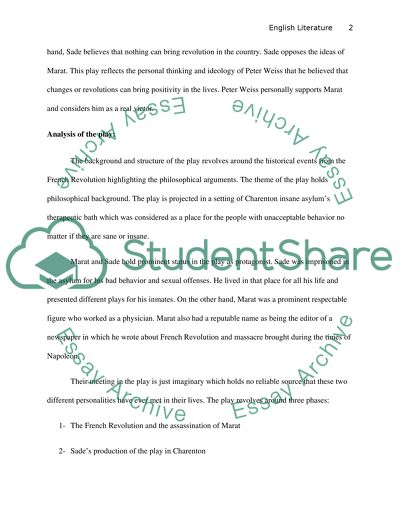Cite this document
(“Marat or Sade by Peter Weiss Research Paper Example | Topics and Well Written Essays - 1500 words”, n.d.)
Retrieved from https://studentshare.org/literature/1448975-marat-or-sade-from-the-play-of-peter-weiss-i-chose
Retrieved from https://studentshare.org/literature/1448975-marat-or-sade-from-the-play-of-peter-weiss-i-chose
(Marat or Sade by Peter Weiss Research Paper Example | Topics and Well Written Essays - 1500 Words)
https://studentshare.org/literature/1448975-marat-or-sade-from-the-play-of-peter-weiss-i-chose.
https://studentshare.org/literature/1448975-marat-or-sade-from-the-play-of-peter-weiss-i-chose.
“Marat or Sade by Peter Weiss Research Paper Example | Topics and Well Written Essays - 1500 Words”, n.d. https://studentshare.org/literature/1448975-marat-or-sade-from-the-play-of-peter-weiss-i-chose.


